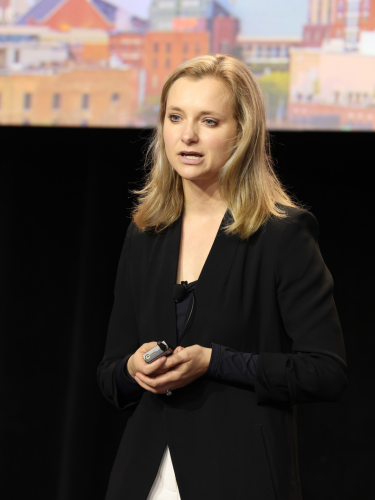Dr. Ami Greene’s Dermoscopy Mastery: A Deep Dive into Skin Cancer and Lesion Diagnosis
Assistant Professor of Dermatology, Mohs surgeon and dermatologist Ami Greene, MD, delivered an enlightening talk for the case based-dermoscopy track on diagnosing common skin cancers and lesions at the SDPA 21st Annual Fall Dermatology Conference. Dr. Greene kicked off her discussion by polling the audience to determine the percentage of attendees who use dermoscopy regularly with their patients. She said her goal was to “convince you to use your dermatoscope” with all of your patients. Even short training can improve accuracy with dermoscopy, with improved dermoscopic accuracy in 10-27% of experience examiners. Dr. Greene reviewed the differences between non-polarized and polarized light in dermoscopy. Non-polarized dermoscopy requires a liquid interface, such as isopropyl alcohol, and contact with the skin.
Coverage: SDPA 21st Annual Fall Dermatology Conference, Oct. 25-29, 2023 in Nashville, Tennessee
She switched gears to highlight dermoscopic core competencies beginning with pigmented network patterns. Reticular nevi tend to regress with age into a patchy reticular pattern. Cobblestone patterning is typical of congenital nevi, with peripheral cobble stoning consistent with growth of a nevus. Patterns of nevi are influenced by skin color, age and location. For example, globular nevi are more common in young patients under 14 and in older patients > 60 years. Additionally, globular nevi are more common on the head, neck and upper chest. Dr. Greene shared the key pearl; “the most powerful indicator of a melanoma with dermoscopy is architectural disorder in terms of both colors and structures.” Therefore, most melanomas will follow the rule of disorganization. Numerous melanoma specific structures were highlighted including atypical pigment network, negative network, shiny white lines, off-center blotch, focal streaks and radial streaming, peripheral tan structureless areas and more.
Dermoscopic features of seborrheic keratoses (SK) were reviewed next. These features include milia-like cysts and comedo like openings, hairpin vessels, moth eaten border and sharp demarcation. Dr. Greene reviewed numerous cases to illustrate these features. An “ink test” can be helpful in identifying seborrheic keratosis. The way to perform this is to use a surgical pen and color over the lesion and then remove the ink— the ink will be retained in the comedone like openings of an SK. Further, Dr. Greene reviewed dermoscopic features of vascular lesions including purple and red lacunae and fiber like septae. Dermatofibromas (DF) often have the “dimple sign” clinically due to invagination of scar, however, there are also classic dermoscopic features. DFs often have peripheral light brown reticular network with central white blotch.
Finally, dermoscopic features of non-melanoma skin cancers were reviewed. Arborizing vessels are very specific to basal cell carcinomas (BCC) with a 96% specificity and 93% sensitivity. Additional features of BCCs include spoke-wheel like structures, leaf-like areas, blue-grey ovoid nests, and ulceration. Clincally, squamous cell carcinomas (SCC) tend to be rough to palpation. Dermoscopic features of SCCs include white circles, brown circles, rossettes, yellow scale, hair-pin vessels with whitish halo, strawberry patterns, and glomerular coiled vessels.
Byline: Sarah B.W. Patton, MSHS, PA-C
Pictured: Ami Greene, MD
